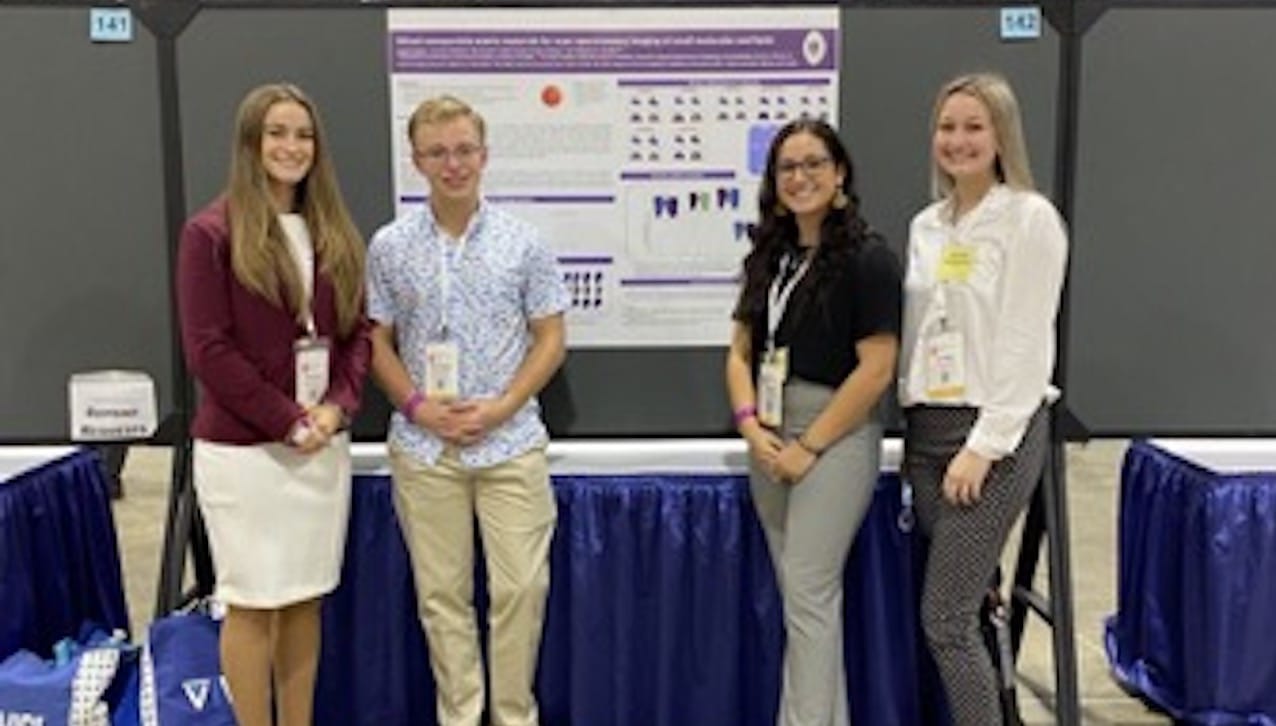Students Present Research at National Conference

Four University of Scranton undergraduate students presented their research at the American Society for Mass Spectrometry's (ASMS) 69th annual conference, with one student’s presentation receiving one of just four poster awards given by ASMS.
The annual conference is attended by more than 6,500 researchers and scientists. The 2021 conference took place in Philadelphia on Oct. 31 through Nov. 4.
University students who presented at the conference were: Mia Gianello, a senior neuroscience major from Old Forge; Angela Hudock, a senior biochemistry, cell and molecular biology major from Sayer; Taylor Moglia, junior neuroscience major from Milford; and Cameron Shedlock, a senior neuroscience major from White Haven. Shedlock received one of just four undergraduate poster awards from ASMS, which also went to undergraduate students from the University of Texas - Austin, North Carolina State University and Purdue University.
All of the students are being mentored by Katherine Stumpo, Ph.D., adjunct professor in the Department of Chemistry at Scranton.
Gianello, a member of the University’s undergraduate Honors Program, presented a poster that summarized a statistical analysis of neurotransmitter expression and spatial arrangement to assess biological variation and tissue homogeneity
Hudock’s research poster presentation explored the advantages of using a mixed nanoparticle matrix to enhance the MALDI MSI signal of small molecules and lipids from tissue sections. She is a member of the University’s Magis Honors Program in STEM.
Moglia, a member of the University’s Magis Honors Program in STEM, presented a poster that investigated the expression of small molecules in the eye of Danio rerio, the zebrafish.
Shedlock’s poster presentation was on research conducted over the summer at the Johns Hopkins School of Medicine, where he investigated the delivery, metabolism, and response of pancreatic tumor xenografts to gemcitabine using MALDI Imaging Mass Spectrometry. He is a member of the University’s Magis Honors Program in STEM.
The undergraduate Honors Program and the Magis Honors Program in STEM are among the University’s five programs of excellence.






